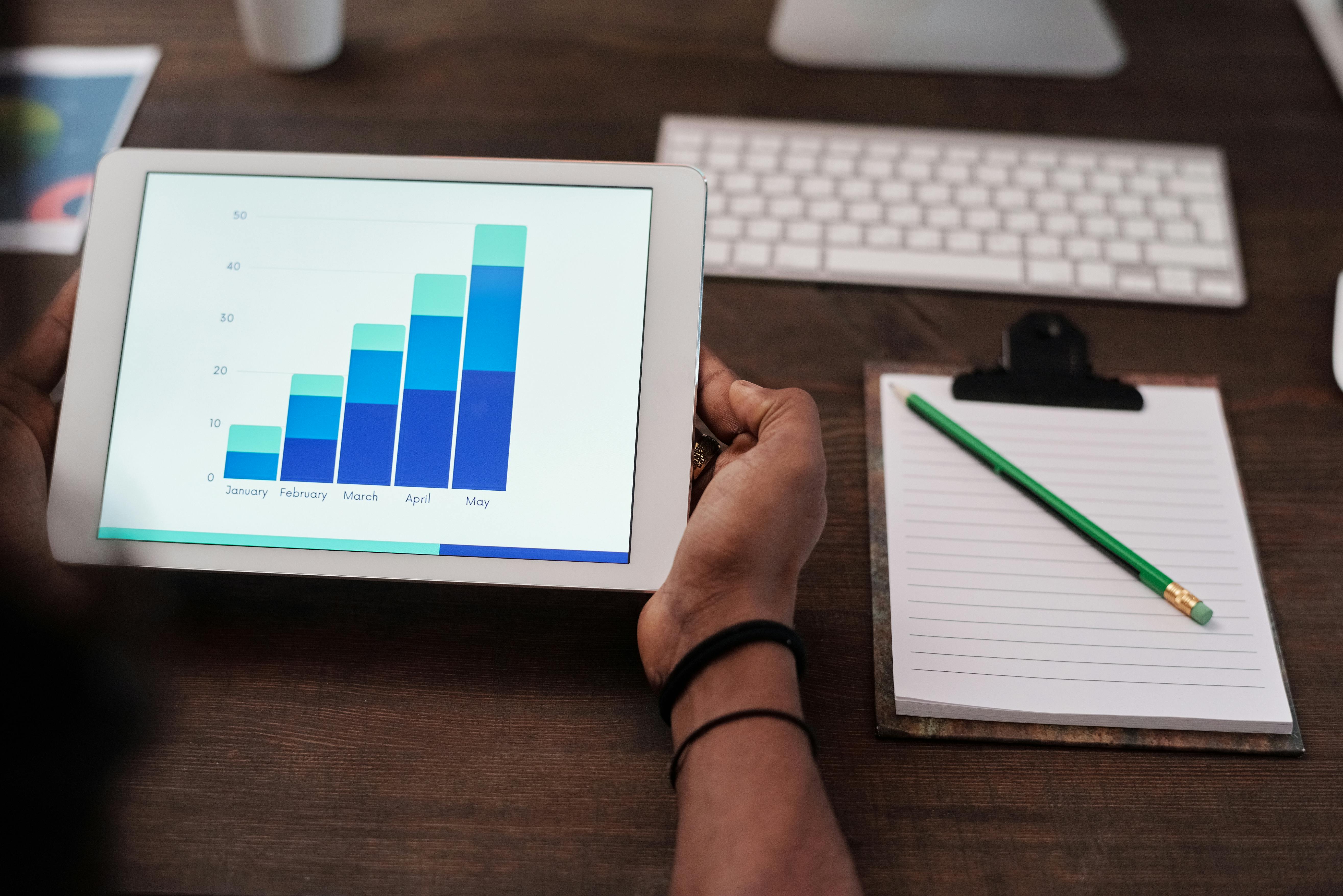
Maximizing Website Traffic with Traffic Bots: Unveiling the Benefits and Pros and Cons
Website traffic is an essential ingredient for online success, and webmasters and marketers are always seeking ways to boost their website visitors. In recent years, the use of traffic bots has gained popularity as a tool for driving website traffic. But before we delve into how they work, let's clarify what traffic bots actually are.
Traffic bots, also known as web bots or bots, are essentially computer programs or scripts designed to mimic human behavior on the internet. These automated tools navigate through websites like regular users, simulating clicks, page views, form submissions, and other interactions. The purpose of these bots is to increase traffic metrics on specific websites artificially.
Typically, webmasters employ traffic bots to improve various aspects of their website's ranking and visibility. The primary goal is often to enhance search engine optimization (SEO) efforts by generating larger quantities of traffic. Consequently, this can make a website appear more popular and attract higher rankings in search engine results pages.
Beyond SEO benefits, traffic bots can also be used for other purposes, such as testing website performance under high-traffic conditions or showcasing fabricated popularity in order to lure advertisers. However, it's worth noting that while the intentions behind using traffic bots may vary, some practices associated with them might violate terms of service agreements with search engines or advertising platforms.
Due to increasing concerns about bot-generated fake web traffic inflating data analytics and misleading advertisers or investors, there are ongoing efforts from regulatory authorities and businesses to detect and counteract traffic bot operations. It is crucial to approach the topic responsibly and be aware of potential repercussions when considering implementing these tools.
Now let's explore the inner workings of traffic bots. At their core, these automated programs function by sending HTTP requests to targeted websites. These requests are then processed by the server hosting the website's content, which activates different actions depending on the code it receives.
By employing various techniques, traffic bots can appear more like real users, trying to mimic their browsing patterns. For instance, bots typically mimic random time intervals between page requests and interact with multiple pages throughout a website instead of following a predictable pattern. Furthermore, they may also use rotating IP addresses from different geographic locations to avoid easy detection.
Some advanced traffic bots have the capability to generate referrals and originate from specific sources like social media platforms or incoming links on other websites. These features help create a more natural appearance of legitimate traffic and make future analysis or data scrutiny more challenging.
It is important to note that traffic bots are different from malicious bots that aim to cause harm, such as those programmed for DDoS attacks or web scraping. Though they share characteristics related to their automated nature, traffic bots primarily focus on simulating user behavior, rather than causing damage or unauthorized access.
In conclusion, traffic bots are computer programs designed to mimic human behavior online and increase website traffic artificially. While they can serve particular marketing or testing purposes, their usage must be exercised within legal and ethical boundaries. Understanding how these bots work sheds light on both leveraging them effectively for legitimate purposes and developing mechanisms to detect and prevent potential abuse.
 The Benefits of Using Traffic Bots for WebsitesUsing traffic bots for websites can offer numerous advantages to online businesses, marketers, and website owners. These sophisticated tools are designed to simulate human-like user behavior and generate targeted traffic to websites. The benefits of employing traffic bots range from increased website visibility and user engagement to improved search engine rankings and potential client conversions.
The Benefits of Using Traffic Bots for WebsitesUsing traffic bots for websites can offer numerous advantages to online businesses, marketers, and website owners. These sophisticated tools are designed to simulate human-like user behavior and generate targeted traffic to websites. The benefits of employing traffic bots range from increased website visibility and user engagement to improved search engine rankings and potential client conversions.Firstly, one of the key advantages of using traffic bots is the ability to enhance website visibility. By driving a large amount of website traffic, these bots can attract more users and increase the chances of users discovering your content or products. This increased visibility can amplify brand exposure and create a broader audience reach, opening doors for potential customers or clients.
Secondly, traffic bots contribute to improved user engagement on websites. Bots can be set to navigate through various pages on your site, mimic clicking on different links, and stay longer on your page—thus conveying genuine user interest. This interactive behavior assists in lowering bounce rates and keeping visitors engaged with meaningful content. When actual users visit a site with recorded bot-influenced engagement metrics, it also increases the likelihood of them staying longer, further bolstering positive user experiences.
An additional benefit of utilizing traffic bots lies in the potential enhancement of search engine rankings. Search engines often consider organic traffic as an important factor in determining a website's credibility. By simulating organic visits, traffic bots help improve a website's ranking, making it more discoverable in search engine results pages (SERPs).
Apart from boosting website visibility and improving search rankings, traffic bots also have the potential to maximize potential client conversions. As more users are driven to your site, there is a higher probability of capturing the attention of individuals who may have an interest in your products or services. With carefully crafted landing pages, automated pop-ups or chatbot interactions can guide visitors toward desired actions such as purchases or form submissions, potentially resulting in increased sales or lead generation.
Furthermore, deploying traffic bots can lead to valuable data collection and analysis. By monitoring user behavior, traffic bots help gather insights regarding website performance, audience preferences, popular content, or potential areas of improvement. This information can then be used to adjust marketing strategies, optimize web design, or refine targeting methods for future campaigns.
Lastly, utilizing traffic bots may also lead to virtual monetization opportunities. Websites that rely on ad revenue can benefit from increased traffic, as more visitors can potentially translate into higher ad impressions and subsequently, greater income generation. Affiliates or referral-based platforms may also experience increased performance due to augmented website visibility and the resulting increase in affiliate clicks or referrals.
In conclusion, incorporating traffic bots into website marketing strategies offers a multitude of benefits ranging from increased visibility and interest to improved search engine rankings and potential conversions. By deploying these tools strategically and ethically, website owners have the opportunity to expand their online presence and achieve their desired objectives more effectively.
 The Various Types of Traffic Bots and Their UsesThere are numerous types of traffic bots, each serving its own purpose in the ever-evolving world of online traffic generation. Understanding the various types and their specific uses can greatly impact your online presence. Here's an overview of some common traffic bots and what they are generally used for:
The Various Types of Traffic Bots and Their UsesThere are numerous types of traffic bots, each serving its own purpose in the ever-evolving world of online traffic generation. Understanding the various types and their specific uses can greatly impact your online presence. Here's an overview of some common traffic bots and what they are generally used for:1. Click Bots:
Click bots simulate human-like clicks on websites or ads. Their primary purpose is to artificially boost website traffic or click-through rates (CTR), often employed to trick ad networks into generating revenue or to manipulate analytics metrics.
2. Impression Bots:
Impression bots aim to create a false impression of high website visits by continuously loading web pages without any real user interaction. These bots inflate view counts, advertising revenues, and popularity metrics, deceiving advertisers and content creators.
3. Referral Bots:
Referral bots manipulate referral URLs to mimic actual traffic sources referring users to particular websites. This type of bot creates artificial referral information, generally used to dishonestly claim referral rewards in affiliate programs or manipulate organic search rankings.
4. Crawlers or Spider Bots:
Unlike malicious bots, crawler or spider bots perform a legitimate function by indexing web pages for search engines. They follow links across websites, analyzing content and collecting data to support search engine ranking algorithms.
5. Chat Bots:
Chat bots are programmed to simulate human-like conversations via messaging platforms. While primarily used for customer service purposes, they can indirectly influence website traffic by driving engagement, resolving queries, and promoting certain products or services.
6. SEO Bots:
SEO (Search Engine Optimization) bots typically automate various SEO-related tasks like checking rankings, analyzing competitors, researching keywords, or validating website health and performance factors. They provide insights that help optimize websites for better search engine visibility.
7. Social Media Bots:
Social media bots automate actions on social platforms such as liking posts, following accounts, or posting content based on predefined criteria. Their role varies from engagement or content sharing to spamming, influencing trends, or spreading misinformation.
8. Botnets:
Botnets consist of numerous infected computers under the control of a central controller. These networks typically carry out multiple types of malicious activities, including click fraud, distributed denial-of-service attacks (DDoS), spamming, or data theft identity.
It's important to note that while some bots serve legitimate purposes, others are involved in fraudulent or malicious activities. Understanding the different types of traffic bots can help individuals and businesses take appropriate measures to minimize their impact and ensure a fair online ecosystem.
 How to Choose the Right Traffic Bot for Your WebsiteChoosing the right traffic bot for your website can be a crucial decision. You want to ensure that it aligns with your goals and brings real value to your online presence. Here are key factors to consider:
How to Choose the Right Traffic Bot for Your WebsiteChoosing the right traffic bot for your website can be a crucial decision. You want to ensure that it aligns with your goals and brings real value to your online presence. Here are key factors to consider:Understand the Purpose: Before diving into traffic bots, clearly define your objectives. Determine whether you want to boost organic traffic, increase ad impressions, improve rankings, or test website performance. Each purpose may require specific features from a traffic bot.
Implemented Features: Evaluate what types of features are offered by different traffic bots. Look for functionalities such as geolocation targeting, referral source selection, session duration control, page visit patterns, and browser diversity. Ensure that the bot supports your desired capabilities.
Customization Options: Consider if the traffic bot allows you to customize parameters effectively. Every website has unique needs and limitations; therefore, it's valuable to choose a bot that provides control over variables like visit time intervals, including weekends or specific hours.
Compatibility: Check how compatible the chosen traffic bot is with your website platform—such as WordPress, Shopify, etc. Ensure it integrates seamlessly without adversely affecting your site's performance and user experience.
Source Quality: Evaluate the quality and authenticity of the sources the traffic bot employs to generate visits. Ethical solutions should avoid utilizing irrelevant or low-quality sources, as they could not only harm your website's integrity but also impact analytics and advertising campaigns.
Proxy Support: Explore whether a potential traffic bot supports proxy connections. Proxies can enhance anonymity and ensure diverse IP addresses while generating web traffic—an essential aspect to appear genuine and credible.
User Interface: A user-friendly interface is critical for seamless navigation within a traffic bot. Examine screenshots or test demos of different options before selecting one. Ensure that it is intuitive and easy to comprehend, allowing efficient use without confusion.
Pricing Model: Evaluate different pricing models offered by traffic bot providers—consider choosing one suitable for your budget and requirements. Some options may charge based on visits, while others offer fixed subscription plans. Determine what aligns better with your traffic needs and financial resources.
Customer Support: Research the reputation and customer support offered by the providers of traffic bots. Knowing that assistance is readily available in case of issues or inquiries can be invaluable.
Reviews and Recommendations: Seek testimonials and reviews from credible sources to identify the experiences and opinions of other users with specific traffic bots. This insight will help you gain a broader perspective on reliability, performance, and overall satisfaction.
Choosing the right traffic bot for your website requires careful consideration of these factors. By understanding your objectives, the available features, customizability, compatibility, and ensuring source quality, proxy support, user interface, pricing models, customer support, as well as leveraging reviews and recommendations, you can make an informed decision that suits your website's unique needs.
 Pros and Cons of Implementing Traffic Bots in Your Digital StrategyImplementing traffic bots in your digital strategy can have both advantages and drawbacks. Let's explore the pros and cons.
Pros and Cons of Implementing Traffic Bots in Your Digital StrategyImplementing traffic bots in your digital strategy can have both advantages and drawbacks. Let's explore the pros and cons.Pros:
1. Increased Website Traffic: Traffic bots are designed to generate large volumes of artificial traffic to your website. This influx of visitors can potentially boost your overall traffic numbers, giving your website a stronger online presence.
2. Potential Improved SEO Ranking: Higher website traffic from traffic bots can indirectly enhance your search engine optimization (SEO) efforts. A higher volume of visitors, longer session durations, and reduced bounce rates could signal to search engines that your website is popular and relevant, potentially resulting in improved rankings.
3. User Engagement Metrics: Traffic bots can manipulate user engagement metrics such as click-through rates (CTR), time on page, and page views on your website. When these metrics appear favorable, it can create an impression of high user engagement, making your site attractive to advertisers or sponsors who seek a highly engaged audience.
4. Performance Testing: Traffic bots can be useful for stress-testing a website's performance by simulating heavy user loads. This helps in identifying potential issues, such as server load limitations or backend failures, allowing you to optimize your website accordingly.
Cons:
1. Low Quality Traffic/Susceptible to Fraud: Traffic generated by bots is often low quality and lacks genuine human interactions. Bots don't have the purchasing intent that real users possess, so driving artificial traffic may not lead to the desired results. Moreover, increased bot traffic might attract advertisers or partners who prefer targeted organic traffic, potentially damaging your reputation.
2. False Analytics & Distorted Data: Since traffic bots mimic real users, data obtained from bot-driven visits may provide a distorted image of user behavior on your website. Metrics like conversion rates or click patterns could be misleading or inaccurate when relying heavily on bot-generated traffic data.
3. Risk of Penalties/Poor Reputation: Depending on the nature of bots' activity, they may violate search engine guidelines or other platforms' terms of service. Engaging in black-hat SEO practices through traffic bots risks penalties, such as lowered search rankings or being removed altogether from indexes. Additionally, websites associated with bots may be perceived negatively by users, leading to a damaged reputation.
4. Ethical Concerns: Utilizing traffic bots raises ethical issues regarding fairness, transparency, and integrity. Bots can artificially inflate user statistics and manipulate various metrics, providing an inaccurate representation of a website's true performance. This conflicts with the principle of transparency that users and businesses expect when interacting online.
Conclusion:
While traffic bots may provide short-term benefits like increased traffic or improved user engagement metrics, the drawbacks and potential risks associated with their implementation are significant. It's essential to consider the long-term effects on your website's reputation, ethical standing, and credibility. Instead of relying on bot-generated traffic, channel efforts towards strategies that focus on organic growth, genuine user interactions, and the provision of high-quality content and services.
 Maximizing Your Website Traffic with the Help of Traffic BotsMaximizing Your Website Traffic with the Help of traffic bots
Maximizing Your Website Traffic with the Help of Traffic BotsMaximizing Your Website Traffic with the Help of traffic botsAs an online business owner or a content creator, you're certainly aware of the importance of website traffic in driving conversions and achieving success. Whether you're selling products or services, publishing informative articles, or monetizing through ads, achieving a high volume of traffic is crucial.
One effective technique to attract more visitors to your website and increase its visibility is by utilizing traffic bots. These digital tools are designed to simulate human behavior and generate automated traffic to your site. Let's explore how traffic bots can assist you in maximizing your website traffic and benefiting your online presence:
1. Nature of Traffic: Generating organic traffic can often be time-consuming and arduous. Traffic bots offer a feasible solution by imitating real user behavior on your website. The simulated interactions include page views, clicks, scrolling, and dwell time metrics, ultimately fooling analytics tools into believing real visitors are engaging with your content.
2. Search Engine Optimization (SEO): Having an optimized website is crucial for attracting organic traffic through search engines. Utilizing traffic bots assists in boosting SEO rankings as they create artificial interactions that mimic natural browsing behavior on various pages of your site.
3. Click-through Rate (CTR): A significant influence on CTR is the position of your website on search engine result pages (SERPs). Higher CTR results in increased organic traffic. By incorporating traffic bots, you increase the simulated clicks on your webpages, positively impacting its position within SERPs.
4. Updated Analytics: Traffic bots provide useful insights through advanced analytics tools that allow you to refine and optimize elements of your website continually. These observations eventually aid in enhancing user experience, making content improvements, identifying popular pages or articles, and adapting marketing strategies.
5. User Engagement: Having a high level of user engagement is crucial for online success. Incorporating traffics bots helps increase user engagement metrics such as time spent on site, pages visited per session, and repeat visits. An improved user experience translates directly into greater traffic potential and enhanced conversion rates.
6. Ad Revenue: If you monetize your website through advertising, an increase in traffic can lead to greater earnings. Traffic bots can indirectly attract advertisers due to your growing audience. As your website traffic increases, the value of your ad space elevates, providing an opportunity for increased ad revenue.
7. Competitive Advantage: Navigating the vast online landscape is a challenging task. By incorporating traffic bots effectively, you stay one step ahead of your competitors. Increased website traffic enhances brand visibility and establishes your online presence as an authoritative figure in your industry.
In conclusion, leveraging traffic bots to maximize your website traffic can potentially provide numerous advantages for your online business or content platform. Implementing these tools strategically allows you to simulate human behavior, boost organic traffic through SEO practices, improve user engagement metrics, provide valuable insights to optimize performance, and gain a competitive edge in the digital realm. However, it is essential always to employ traffic bots ethically and within legal guidelines to maintain both search engine credibility and moral standards.
 Ethical Considerations and Implications of Using Traffic BotsEthical considerations and implications surrounding the use of traffic bots are quite significant and raise a number of important questions.
Ethical Considerations and Implications of Using Traffic BotsEthical considerations and implications surrounding the use of traffic bots are quite significant and raise a number of important questions.First and foremost, the use of such bots can be seen as unethical due to their potential to manipulate web traffic artificially. This manipulation often contradicts the principles of fairness in online interactions, especially for websites depending on genuine organic traffic for success. Bots can mislead advertisers, skew data analytics, and give a false impression of popularity or relevance.
The practice may also violate terms of service established by various platforms, such as search engines or social media platforms. These terms typically prohibit the use of bots or any form of automated activities that don't adhere to their guidelines. Engaging in these activities willingly disregards the rules set by platform providers, which is generally considered unethical.
Using traffic bots can infringe on the rights and privacy of others. Some bots mimic user behavior and generate artificial clicks, views, or interactions which can negatively impact users on both sides. For instance, artificially driving up traffic numbers may indirectly restrict access to certain content for genuine users, hampering their browsing experience. The actions carried out by bots might potentially compromise individuals' online privacy and safety.
Economically speaking, using traffic bots for fraudulent purposes comes at great costs for advertisers who pay based on impressions or conversions. These financial losses can deter ad agencies or businesses from investing in legitimate marketing efforts, affecting those who depend on it for sustainable growth in the digital landscape.
Additionally, using traffic bots creates an uneven playing field for website owners seeking honest online exposure and success. It skews the competition by giving an advantage to those employing deceptive practices rather than focusing on content quality or legitimate marketing strategies. This imbalance undermines credibility and fosters an atmosphere of distrust among competitors.
From a legal standpoint, using traffic bots could potentially be viewed as illegal in some jurisdictions if they violate laws related to computer misuse or unauthorized access to systems controlled by others. The intention to defraud, interfere with operations, or disrupt websites may attract legal consequences.
Overall, while traffic bots can offer certain benefits to businesses seeking exposure, their widespread misuse undermines integrity, both individually and in the digital community as a whole. Their employment encompasses various ethical considerations related to fairness, privacy, legality, and the overall sustainability of online ecosystems.
 Integrating Traffic Bots with SEO Strategies for Maximum ImpactIntegrating traffic bots with SEO strategies can be a powerful way to boost website visibility and attract more organic traffic. When used correctly, traffic bots can assist in implementing various SEO tactics to maximize impact and improve overall website performance.
Integrating Traffic Bots with SEO Strategies for Maximum ImpactIntegrating traffic bots with SEO strategies can be a powerful way to boost website visibility and attract more organic traffic. When used correctly, traffic bots can assist in implementing various SEO tactics to maximize impact and improve overall website performance.Firstly, it is crucial to understand the purpose of traffic bots. These tools are designed to simulate human behavior online, generating website visits, clicks, and engagement metrics that search engines use to determine a site's popularity and relevance. Integrating traffic bots into your SEO strategies can optimize your efforts and help you achieve desirable results faster.
To begin with, focusing on targeted keywords is essential when integrating traffic bots with SEO strategies. Conduct thorough keyword research to identify relevant keywords or phrases your target audience is likely to search for. By incorporating these keywords naturally within your content, meta tags, and alt texts, you can optimize your website for search engines and attract more relevant traffic.
Secondly, backlinks play a vital role in SEO, as they demonstrate credibility and authority in the eyes of search engines. Traffic bots can contribute to your backlink building strategy by generating organic clicks on your site's links placed across external platforms or directories. This engagement signals popularity and boosts search engine rankings.
Additionally, integrating traffic bots with SEO strategies often involves improving website performance metrics. Search engines consider factors like page load speed and user engagement when ranking sites. Traffic bots come into play here as they can help increase time spent on your website and reduce bounce rates – both of which positively impact SEO.
Another way traffic bots can fuel SEO efforts is through social signals. Search engines value social media engagement as an indicator of website reputation. By deploying traffic bots to engage with your content on various social media platforms authentically, you can amplify the reach of your posts and capture more attention from users genuinely interested in your niche.
However, it should be noted that while traffic bots have their benefits in augmenting SEO strategies, their misuse or overuse can have adverse effects. Search engines are equipped to identify illegitimate traffic generated by bots and may penalize websites for such practices. Always use traffic bots ethically, ensuring they simulate genuine user behavior and add value to your website's performance.
In conclusion, integrating traffic bots with SEO strategies can be a valuable approach for maximizing impact. By focusing on targeted keywords, leveraging backlinks, optimizing website performance, and utilizing social signals effectively, traffic bots can boost your SEO efforts and attract a genuine target audience. Remember to use them responsibly within the boundaries set by search engines, aiming to provide useful and engaging content that resonates with real users.
Please note that using traffic bots for unethical purposes, such as spamming or manipulating search results, is strongly discouraged and may lead to severe consequences for your website's online presence.
 The Role of Traffic Bots in Boosting Online Visibility and Engagementtraffic bots play a crucial role in enhancing online visibility and engagement for websites and online businesses. By effectively replicating human behavior, these sophisticated computer programs generate traffic and user activity, thereby boosting website metrics and improving overall online presence.
The Role of Traffic Bots in Boosting Online Visibility and Engagementtraffic bots play a crucial role in enhancing online visibility and engagement for websites and online businesses. By effectively replicating human behavior, these sophisticated computer programs generate traffic and user activity, thereby boosting website metrics and improving overall online presence.One of the key contributions of traffic bots is their ability to increase organic website traffic. By automatically visiting websites, navigating through the pages, and engaging with various elements such as links, videos, and images, these bots simulate genuine user interaction. As a result, they contribute to improved search engine rankings as search engines perceive the increased influx of visitors as a positive indicator of website popularity and relevance.
Moreover, traffic bots aid in enhancing user engagement metrics. For instance, these bots simulate various activities like clicking on buttons, filling out forms, making comments, or even initiating conversations on chat platforms. Such actions help websites achieve higher average session durations, lower bounce rates, and increased page views per visit. These engagement metrics positively impact a website's reputation and credibility, while also providing opportunities for conversion optimization.
Traffic bots also influence social validation through increased social interactions. They can automatically subscribe to social media accounts, follow other users, like posts or tweets, and even initiate conversations through an AI-powered chatbot interface. As a result, websites gain enhanced social validation as they acquire more followers and attain increased exposure on popular social networking platforms. This enables them to build stronger brand credibility and trust among potential users.
In addition to that, traffic bots assist in improving overall analytics data. By generating realistic browsing patterns and user interaction data, these bots provide valuable information about visitor demographics, preferences, and behavior. Such insights help website owners and marketers adjust their strategies to align with their target audience's needs effectively.
However, it's crucial to mention the ethical aspects surrounding the use of traffic bots. While these tools offer notable benefits when used conscientiously, abuse or misuse of such technology can negatively impact other websites or distort meaningful analytics data. Thereby, it is of utmost importance to follow best practices and guidelines to ensure the responsible utilization of traffic bots, respecting both ethical and legal boundaries.
To sum up, traffic bots serve as valuable allies for optimizing online visibility and engagement. They contribute to generating organic website traffic, improving user engagement metrics, enhancing social validation, and providing insightful analytics data. While the responsible use of traffic bots surreptitiously assists websites in attaining their objectives, it is essential to acknowledge the ethical considerations to maintain the integrity and fairness in the digital ecosystem.
 How Traffic Bots Can Influence Analytics and SEO Rankingstraffic bots can greatly impact analytics and SEO rankings in several ways. Firstly, traffic bots can manipulate website traffic statistics reported by analytics tools. These bots are designed to generate fake visits to a website, which can artificially inflate website traffic numbers. This can mislead website owners or marketers into believing that their website is receiving high levels of organic traffic when, in reality, most of it is generated by bots.
How Traffic Bots Can Influence Analytics and SEO Rankingstraffic bots can greatly impact analytics and SEO rankings in several ways. Firstly, traffic bots can manipulate website traffic statistics reported by analytics tools. These bots are designed to generate fake visits to a website, which can artificially inflate website traffic numbers. This can mislead website owners or marketers into believing that their website is receiving high levels of organic traffic when, in reality, most of it is generated by bots.The presence of traffic bots can significantly skew various metrics used by analytics tools. For instance, it can create a false impression that the website has a high number of unique visitors, prolonged average visit durations, or low bounce rates. Such inaccuracies can hinder the ability to understand genuine user behavior and make informed decisions based on accurate data.
Moreover, the impact of traffic bots on SEO rankings can be disconcerting. These bots often access various pages within a website rapidly and repeatedly, simulating user behavior and engagement. Search engines may interpret these actions as positive signals indicating high user interest, which could potentially influence a website's organic search rankings positively.
However, it's worth noting that search engines constantly evolve their algorithms to detect and penalize artificial and spammy practices. So while traffic bots may initially appear to boost rankings, these gains are typically short-lived. Search engines become proficient at identifying fake behaviors and deploying mechanisms to protect the integrity of search results.
In addition to falsely influencing analytics and SEO rankings, the presence of traffic bots can also place potential strain on a website's server infrastructure. The large volume of artificially generated visits from these bots consumes bandwidth and server resources, impacting site performance for genuine human users.
Another disadvantage associated with traffic bots pertains to user experience. Bots do not interact with a website like real users; they do not make purchases, leave comments, or engage in any meaningful way. Therefore, despite an increase in traffic numbers, there is limited value in terms of building a loyal user base or generating tangible business outcomes.
Finally, the use of traffic bots violates ethical standards and can be a direct violation of service agreements with analytics platforms or ad networks. Utilizing such bots can result in severe consequences, including the suspension or permanent banning of websites from advertising networks or even facing legal implications.
Therefore, it is crucial for website owners and marketers to be aware of the negative implications and potential risks associated with traffic bots. It is advisable to aim for organic, genuine traffic by employing legitimate SEO strategies and providing valuable content to attract human visitors, delivering better user experiences, fostering engagement, and optimizing conversion rates.
 Real Cases: Success Stories and Failures with Traffic BotsReal Cases: Success Stories and Failures with traffic bots
Real Cases: Success Stories and Failures with Traffic BotsReal Cases: Success Stories and Failures with traffic botsWhen it comes to using traffic bots, users have experienced a mix of success stories and failures. Here's a look at some real cases that shed light on both aspects.
Success Stories:
1. Increased Website Traffic: Many individuals and companies have reported significant increases in their website traffic after utilizing traffic bots. These bots efficiently attract visitors to their websites, resulting in improved visibility, higher user engagement, and increased chances of conversions. With targeted strategies and customized bot settings, some businesses have witnessed remarkable growth in organic traffic, leading to greater online success.
2. Enhanced Conversion Rates: Several e-commerce platforms and online marketers have achieved successful results by employing traffic bots to drive quality traffic towards their sales pages. By focusing on relevant niches and robust targeting options, these bots help generate leads that are more likely to convert into customers. As a result, businesses have experienced notable improvements in conversion rates, ultimately boosting revenue and profitability.
3. Effective Content Distribution: Automating the process of content distribution is another area where traffic bots have proved beneficial. Successful users found that with the help of these bots, they could conveniently promote their blog posts, articles, videos, or other media across various platforms and channels while effortlessly engaging with the target audience. This streamlined approach has led to wider content reach and increased engagement levels.
Failures:
1. Inflated Visitor Count: One common failure associated with using traffic bots revolves around accuracy in analytics. Some users end up with distorted data due to inflated visitor counts as bots might not always possess genuine human behavior patterns. Careless use or flawed implementation of traffic bots can sometimes result in falsely boosted website traffic numbers, misleading users about their actual reach and effectiveness.
2. Diminished User Experience: If not used thoughtfully, traffic bots may negatively impact user experience on websites they generate traffic for. Poorly programmed or misconfigured bots can overload servers, slow down loading times, or even crash websites. This causes frustration and disappointment among users, potentially leading to a loss of trust and credibility for businesses relying on traffic bots.
3. The Risk of IP Blocking: Traffic bots may pose risks when it comes to IP blocking. If an excessive number of bot-generated requests are made from the same IP address, it can trigger alarms with security systems and lead to subsequent blocking or blacklisting by various websites or networks. As a consequence, bot-generated traffic might then become restricted or entirely blocked, rendering the efforts wasted.
In conclusion, while there have been significant success stories with traffic bots leading to increased website traffic, improved conversions, and effective content distribution; there have also been failures associated with inaccurate analytics, diminished user experience, and potential IP blocking concerns. It emphasizes the importance of using traffic bots strategically, understanding their limitations, and consistently evaluating their impact for optimal results and long-term success.
 Legal Aspects to Consider When Using Traffic BotsWhen it comes to using traffic bots, it is crucial to understand the legal aspects associated with utilizing such software. This will allow you to navigate the use of traffic bots while ensuring compliance with applicable laws and regulations. Here are some key legal considerations to be mindful of:
Legal Aspects to Consider When Using Traffic BotsWhen it comes to using traffic bots, it is crucial to understand the legal aspects associated with utilizing such software. This will allow you to navigate the use of traffic bots while ensuring compliance with applicable laws and regulations. Here are some key legal considerations to be mindful of:1. Terms of Service/Use: It is essential to carefully review and adhere to the terms of service or terms of use provided by traffic bot providers. These terms outline the specific conditions under which their services can be used, including any potential restrictions or prohibitions.
2. Intellectual Property Rights: Respect intellectual property rights when using traffic bots. Ensure that the use of these bots does not infringe upon copyrights, trademarks, or patents owned by third parties. Sharing or distributing copyrighted materials without proper authorization is illegal.
3. Privacy Laws: Be aware of relevant privacy laws while using traffic bots. Depending on your jurisdiction, collecting personal data through these tools may have legal implications without prior consent from individuals whose information you are collecting.
4. Regulatory Compliance: Consider whether using traffic bots complies with relevant laws and regulations in your location, including but not limited to consumer protection laws, marketing regulations, and anti-spam legislation (e.g., CAN-SPAM Act in the United States). Violating these rules could lead to severe penalties or legal consequences for your website or business.
5. Competitor Analysis: While traffic bots can be used for competitive analysis purposes, be cautious not to employ them in a way that constitutes unfair competition or violates laws related to trade secrets and corporate espionage. Respect confidential information and always acquire data by legitimate means.
6. Fraudulent Activities: Engaging in fraudulent activities while utilizing traffic bots is both unethical and illegal. This includes generating fake impressions or clicks, artificially inflating statistics for monetary gain, or engaging in fraudulent advertising practices like click fraud.
7. Liability: Understand who may be held responsible for any damages caused by the use of traffic bots. This could include potential harm to websites, networks, or individuals resulting from increased server load, DDoS attacks, unauthorized data collection, or privacy breaches. Additionally, content that may be generated by bots should comply with libel, defamation, and hate speech laws.
8. Jurisdictional Variations: Keep in mind that legal requirements can significantly vary between jurisdictions. What is allowed in one region may be prohibited in another. Therefore, it is essential to familiarize yourself with the laws and regulations specific to your location and that of your target audience.
It is crucial to consult legal professionals experienced in intellectual property, privacy, and internet law when incorporating traffic bots into your online activities. Expert advice will help ensure a lawful and ethical use while minimizing legal risks associated with deploying traffic bots.
 Balancing Organically Grown Traffic with Artificially Generated Visits from BotsWhen it comes to increasing traffic bot to a website or blog, there are two main approaches: organically grown traffic and artificially generated visits from bots.
Balancing Organically Grown Traffic with Artificially Generated Visits from BotsWhen it comes to increasing traffic bot to a website or blog, there are two main approaches: organically grown traffic and artificially generated visits from bots. Organically grown traffic refers to the visitors that find and explore a website naturally, without any external assistance. This type of traffic is attracted through search engine optimization (SEO), content marketing, social media efforts, and various other legitimate strategies. By creating valuable and engaging content, optimizing it for search engines, promoting it on social media platforms, and establishing relationships with other websites for backlinks, website owners can slowly but steadily grow their organic traffic over time.
On the other hand, artificially generated visits from bots are non-human visitors sent to a website intentionally. These bots are designed to simulate real user behavior, including browsing pages, multiple clicks, and even conversions. Webmasters may choose to incorporate bots into their strategy for various reasons such as boosting ad revenue, improving website analytics metrics, or gaining a competitive edge over rivals.
Bringing these two approaches together effectively is crucial for balancing your website's traffic. It can provide benefits such as boosting ad impressions or click-through rates, validating the performance of web pages, removing bias in A/B testing through controlled bot experiments, and more. However, it is important to maintain a responsible approach to bot traffic to avoid any penalties from search engines or potential negative impacts on user experience.
When incorporating artificially generated visits from bots, transparency is key. Make sure to disclose this practice in your privacy policy or terms of service. Additionally, differentiate bot-generated traffic from organic traffic in your analytics tools by segmenting and tracking them separately. This will help you identify patterns and trends that could assist in enhancing your overall website performance.
Overall, finding the right balance between organically grown traffic and artificially generated visits is essential for sustainable growth and success of a website or blog. While driving organic traffic remains a top priority as it indicates genuine user interest, smartly incorporating controlled and transparent bot visits can serve as an additional tool to optimize certain aspects of your website.
 Tips for Safely Using Traffic Bots Without Hurting Your Website's Reputation Using traffic bots to boost website traffic can be a tempting option to improve visibility and credibility. However, it is crucial to approach this technique cautiously to protect your website's reputation. Here are some essential tips for safely utilizing traffic bots:
Tips for Safely Using Traffic Bots Without Hurting Your Website's Reputation Using traffic bots to boost website traffic can be a tempting option to improve visibility and credibility. However, it is crucial to approach this technique cautiously to protect your website's reputation. Here are some essential tips for safely utilizing traffic bots:Be Mindful of Traffic Source Quality: Not all traffic sources are reliable or legitimate. When choosing a traffic bot, ensure it offers high-quality sources and not just a random collection of IPs. Look for bots that use real and relevant user agents, implying that the bot-generated traffic appears more organic.
Avoid Excessive Bot Activity: Implement restraint and moderation while using traffic bots. Avoid creating sudden surges in traffic, as drastic spikes can raise suspicion and potentially harm your website's reputation. Gradually increase the traffic volume over time with realistic patterns to mimic genuine growth.
Use Proxies/WAFs/Cookies: Utilizing proxies, web application firewalls (WAFs), and cookies can enhance the authenticity of bot-generated traffic. By rotating proxies, masking IP addresses, and saving cookies, you can mimic natural user behavior and reduce the risk of being flagged as suspicious by search engines or analytics tools.
Replicate Human Browsing Behavior: Good traffic bots enable the customization of various settings such as visit duration, page interaction, click patterns, and scrolling behavior. Configure these settings to reflect human browsing habits to avoid detection. Incorporating randomness into session times and click locations can make the bot-generated traffic more lifelike.
Limit Bots to Non-critical Actions: It is crucial not to rely solely on traffic bots for critical website functions such as form submissions, transactions, or engagement on interactive sections. Redirect bot-generated clicks or visits towards low-risk areas like blog posts, informational pages, or non-monetary actions. Balance between organic traffic and bot-driven visits is key.
Monitor Analytics Data Carefully: Keep a close eye on your website's analytics data to determine any irregular patterns that might raise suspicion. Make sure to compare the bot-generated traffic statistics with your existing organic traffic metrics to identify any discrepancies, especially in terms of bounce rates, time on site, or traffic sources.
Test Gradual Traffic Scaling: Start with a smaller volume of traffic and gradually increase it over time. Testing allows you to analyze the impact of the bot-generated traffic on your website's performance and reputation without risking significant damage. Monitor how search engines, ad networks, or other tools react to your traffic patterns and adjust accordingly.
Stay Informed & Adapt: Regularly educate yourself about search engine algorithms, analytics tools, and evolving techniques for identifying bot traffic. As technology advances, so do the methods employed by detection systems. Staying informed helps you adapt your strategies accordingly and minimizes the risks associated with using traffic bots.
Remember, while traffic bots can provide short-term benefits, prioritizing genuine user engagement and organic growth for your website should always remain your primary focus.
 Future Trends: The Evolving Relationship Between Websites, Traffic, and AutomationIn recent years, the digital landscape has witnessed significant advancements in technology and automation, leading to an evolving relationship between websites, traffic, and automation. This ongoing shift has brought about future trends that are shaping how online platforms drive traffic and enhance user engagement. Today, we will delve into this intriguing topic, exploring various aspects and implications that emerge from the intersection of websites, traffic generation, and automation.
Future Trends: The Evolving Relationship Between Websites, Traffic, and AutomationIn recent years, the digital landscape has witnessed significant advancements in technology and automation, leading to an evolving relationship between websites, traffic, and automation. This ongoing shift has brought about future trends that are shaping how online platforms drive traffic and enhance user engagement. Today, we will delve into this intriguing topic, exploring various aspects and implications that emerge from the intersection of websites, traffic generation, and automation.Websites have long been recognized as crucial tools for businesses, organizations, and individuals to showcase their products and services, share information, or connect with a larger audience. As internet usage continues to skyrocket globally, the competition to capture and retain users' attention has become increasingly fierce. With this rapid expansion come new opportunities and challenges.
Automation plays a pivotal role in this evolving landscape by revolutionizing several key factors that influence website performance. Content creation, dissemination, and engagement are areas significantly impacted by automation. Brands can optimize their digital presence by leveraging automated content creation tools, which generate tailored posts, articles, or videos targeting specific audiences. This reduces the workload on content creators while ensuring a constant flow of fresh content to attract online traffic.
In addition to content generation, automating various aspects of user engagement is becoming crucial for websites today. From chatbots assisting customers with inquiries to personalized email marketing campaigns triggered by user behavior analysis through AI-driven algorithms—automation empowers websites to nurture and sustain relationships with individuals browsing their pages. Intelligent automation allows these platforms to deliver tailored experiences to users, offering relevant information or incentives based on their preferences and behavior patterns.
Moreover, automation plays a central role in amplifying website traffic. A growing trend is the use of traffic bots – programs designed to simulate human-like interactions on websites. These bots not only increase web traffic but also provide organizations insights into user preferences, user interface effectiveness, and other valuable metrics. While some argue that the use of traffic bots may lead to artificially inflated visitor counts that do not reflect genuine engagement, others see them as indispensable tools for enhancing conversion rates and user experience due to their ability to automate repetitive actions and perform tasks beyond human capacity.
Another emerging aspect of the evolving relationship between websites, traffic, and automation is the integration of Artificial Intelligence (AI). AI-powered systems analyze massive amounts of data to identify patterns, generate insights, and optimize website performance. By implementing machine learning algorithms, websites can adapt to users' needs in real-time, showcasing personalized content or implementing dynamic pricing strategies to improve conversion rates. With continuous advancements in AI, incorporating this technology into website design and traffic generation strategies is set to become more prevalent in the future.
However, as with any technological advancement, caution and ethical considerations should be exercised. While automation streamlines many processes and enhances efficiency, it is crucial to strike a balance between automated interactions and maintaining genuine human connections. Websites must find the middle ground that empowers automation without alienating users or compromising their privacy.
The future trends indicate that the intersection of websites, traffic generation, and automation will continue to evolve and reshape online experiences. As technologies advance further, we can expect to witness enhancements in content creation, user engagement capabilities, traffic generation strategies, and AI integration. Websites that keep pace with these trends will be better equipped to attract and retain visitors in an increasingly competitive digital landscape while delivering customized experiences for optimal user satisfaction.

